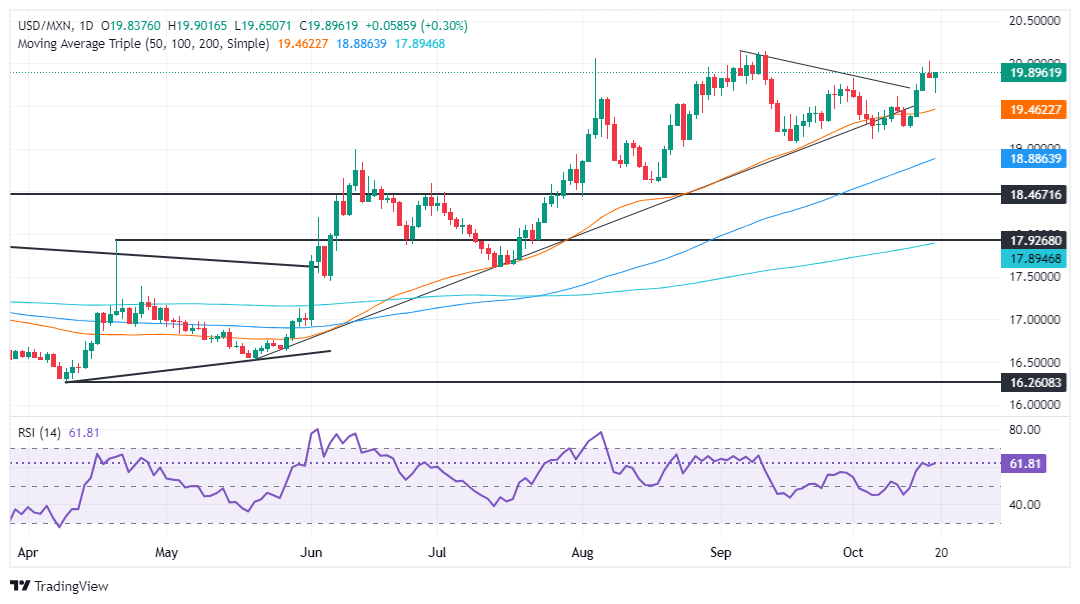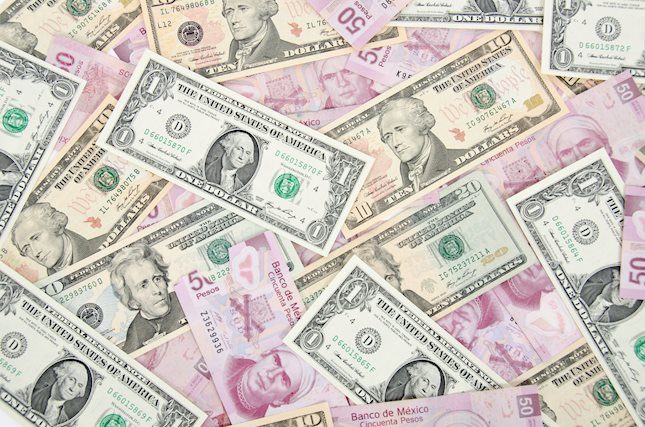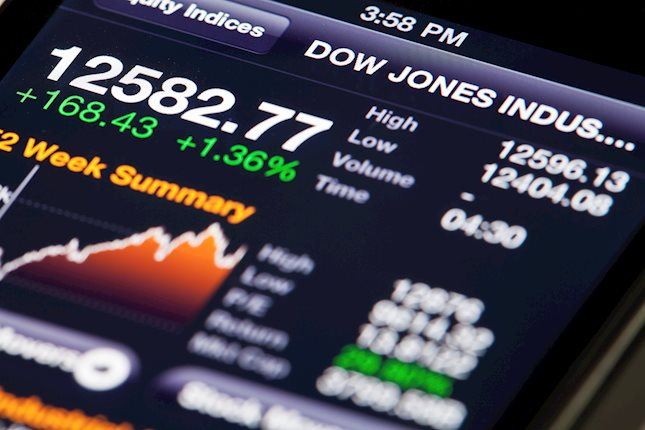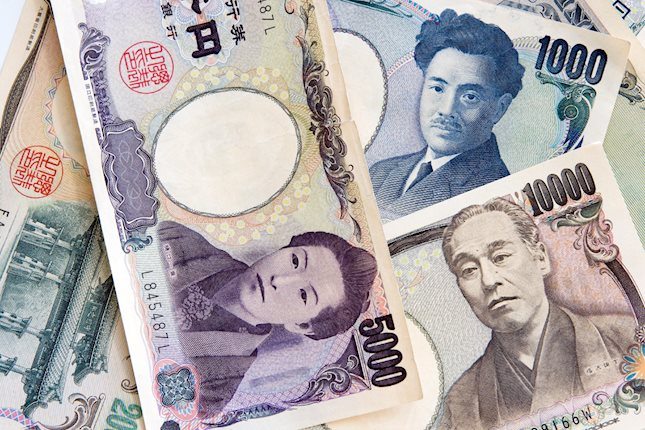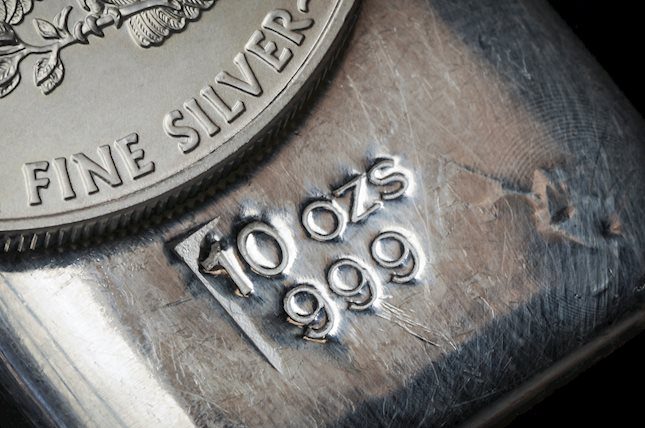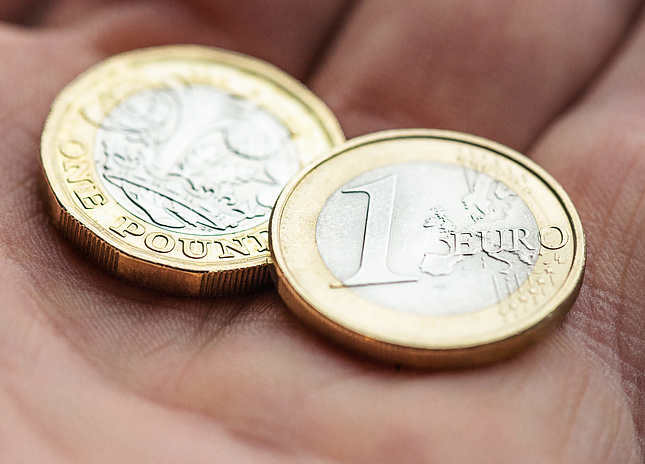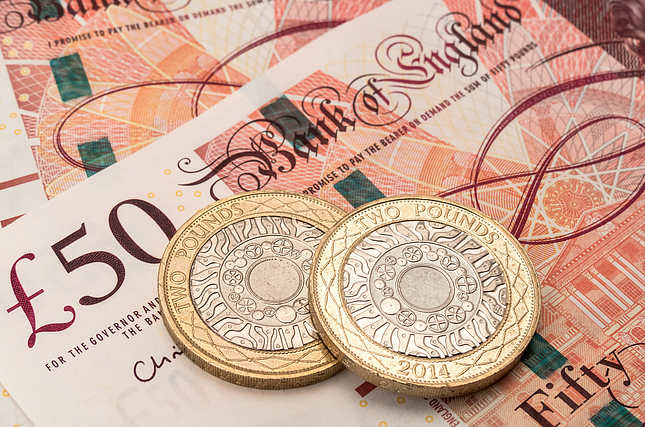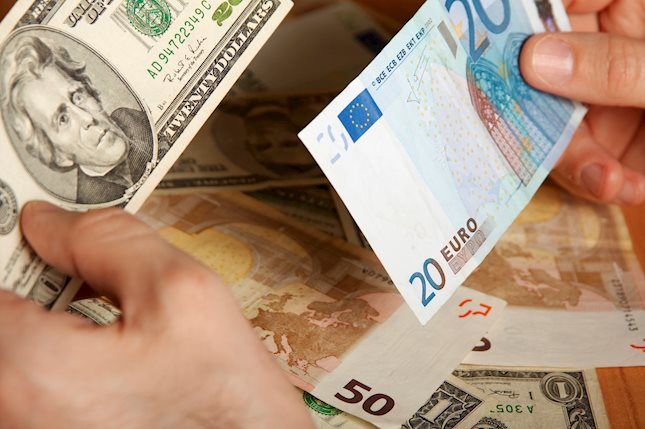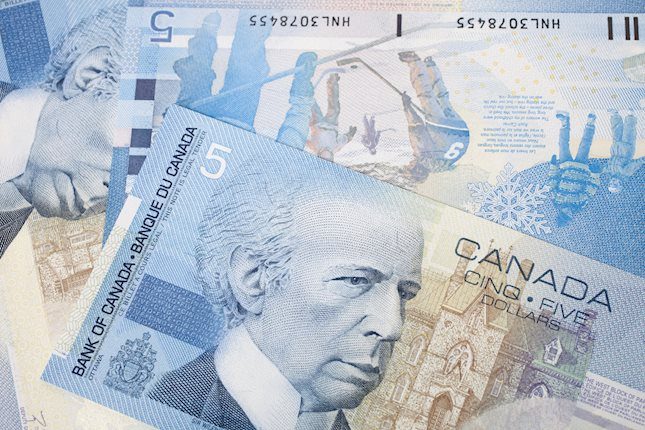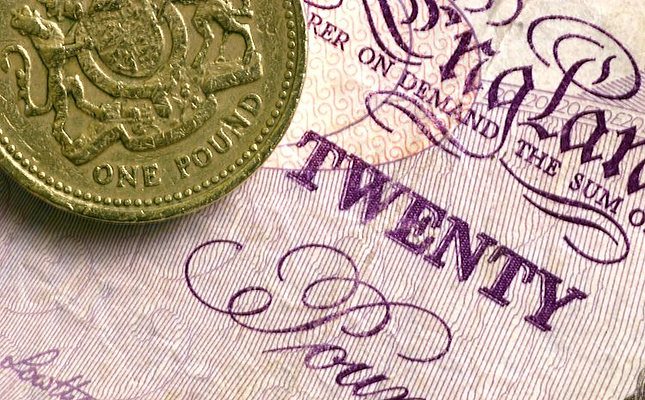Mexican Peso struggles to gain ground, amid soft US Dollar
- Mexican Peso gained 0.90% earlier on Friday but erased gains amid a weaker US Dollar.
- US Dollar Index hit a two-month high before retreating to 103.48, down 0.23% on Friday.
- China's stimulus measures provided brief support to the Peso.
The Mexican Peso remained firm against the US Dollar on Friday yet erased earlier gains, which saw the emerging market currency appreciate over 0.90%. US economic data revealed during the week justified the Federal Reserve’s (Fed) gradual approach to easing policy, bolstering the Greenback and weighing on the Peso. The USD/MXN trades at 19.84, up by 0.20%.
Wall Street trades with gains, underpinned by a robust US Retail Sales and unemployment claims report on Thursday. The data underpinned the Greenback, which hit a two-month high against a basket of six currencies known as the US Dollar Index (DXY). The DXY reached 103.87 before retreating toward 103.48 as of writing.
Meanwhile, the US economic docket featured Building Permits and Housing Starts for September, with both figures deteriorating compared to August data.
Earlier, the Mexican Peso advanced on China’s news that the People Bank of China (PBoC) would provide further stimulus to the economy, aimed at relieving the troubled property market and boosting domestic consumption. Before that announcement, China revealed that its economy grew at a 4.6% pace annually compared to Q3 2023.
Despite that, the Fed is heavily expected to lower interest rates by 25 basis points at the November meeting. Odds remained at 92.9%, according to CME FedWatch Tool data.
Daily digest market movers: Mexican Peso tumbles as USD/MXN surges past 19.90
- Earlier during the week, the Mexican Peso touched a five-week low as the USD/MXN hit a high of 20.02
- The International Monetary Fund (IMF) projected the Mexican economy to grow 1.5% in 2024, lower than in its previous forecast. The IMF estimates a deeper economic slowdown for the next year, estimating 1.3% GDP growth, and forecasts inflation to hit Banxico’s 3% goal in 2025.
- The IMF said that a recent judicial reform creates "important uncertainties about the effectiveness of contract enforcement and the predictability of the rule of law."
- Banxico’s survey revealed that economists estimate the central bank will lower rates by 50 bps for the rest of the year.
- September US Building Permits tumbled -2.9%, down from 1.47 million to 1.428 million, missing estimates of 1.46 million.
- Housing Starts in September dipped -0.6%, from 1.361 million to 1.354 million.
- Data from the Chicago Board of Trade via the December fed funds rate futures contract shows investors estimate 48 bps of Fed easing by the end of the year.
USD/MXN technical outlook: Mexican Peso dives as USD/MXN climbs above 19.80
The USD/MXN is upwardly biased despite falling to a two-day low of 19.64, which witnessed buyers moving in, pushing the exchange rate above its opening price. The Relative Strength Index (RSI) suggests that bulls are in charge, which could pave the way for further upside.
Once the USD/MXN surpassed the October 17 high of 20.02, the next resistance level would be the YTD high at 20.22. On further strength, the USD/MXN would aim toward 20.50 before rallying to 21.00.
Conversely, if the USD/MXN tumbles below today’s low of 19.64, the next stop would be the October 10 daily peak at 19.61. On further weakness, the next floor will be the October 4 swing low of 19.10 before testing 19.00.
Risk sentiment FAQs
In the world of financial jargon the two widely used terms “risk-on” and “risk off'' refer to the level of risk that investors are willing to stomach during the period referenced. In a “risk-on” market, investors are optimistic about the future and more willing to buy risky assets. In a “risk-off” market investors start to ‘play it safe’ because they are worried about the future, and therefore buy less risky assets that are more certain of bringing a return, even if it is relatively modest.
Typically, during periods of “risk-on”, stock markets will rise, most commodities – except Gold – will also gain in value, since they benefit from a positive growth outlook. The currencies of nations that are heavy commodity exporters strengthen because of increased demand, and Cryptocurrencies rise. In a “risk-off” market, Bonds go up – especially major government Bonds – Gold shines, and safe-haven currencies such as the Japanese Yen, Swiss Franc and US Dollar all benefit.
The Australian Dollar (AUD), the Canadian Dollar (CAD), the New Zealand Dollar (NZD) and minor FX like the Ruble (RUB) and the South African Rand (ZAR), all tend to rise in markets that are “risk-on”. This is because the economies of these currencies are heavily reliant on commodity exports for growth, and commodities tend to rise in price during risk-on periods. This is because investors foresee greater demand for raw materials in the future due to heightened economic activity.
The major currencies that tend to rise during periods of “risk-off” are the US Dollar (USD), the Japanese Yen (JPY) and the Swiss Franc (CHF). The US Dollar, because it is the world’s reserve currency, and because in times of crisis investors buy US government debt, which is seen as safe because the largest economy in the world is unlikely to default. The Yen, from increased demand for Japanese government bonds, because a high proportion are held by domestic investors who are unlikely to dump them – even in a crisis. The Swiss Franc, because strict Swiss banking laws offer investors enhanced capital protection.
Forex News
Keep up with the financial markets, know what's happening and what is affecting the markets with our latest market updates. Analyze market movers, trends and build your trading strategies accordingly.

